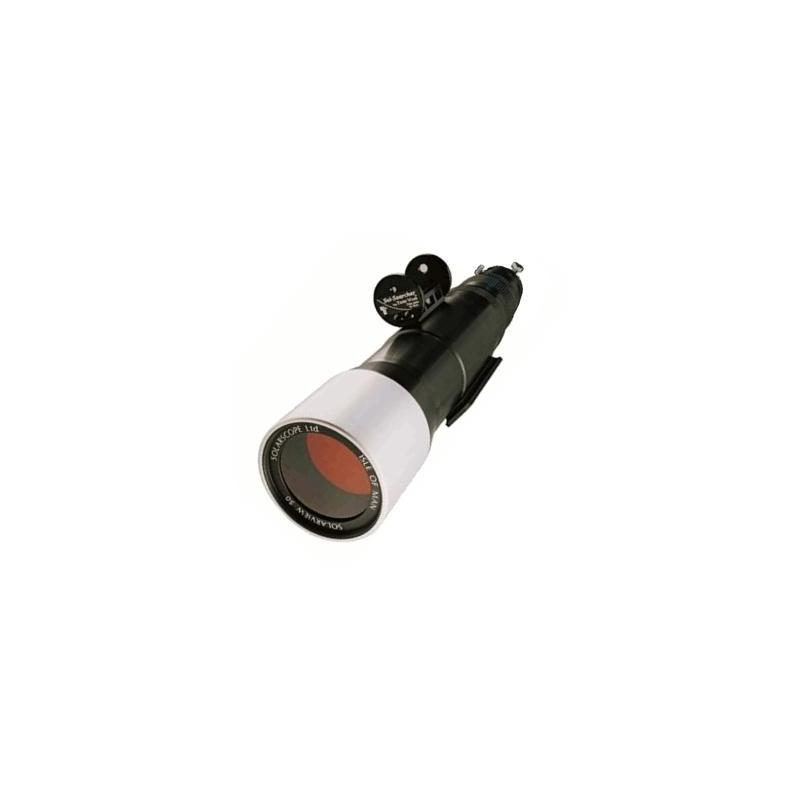

These ranged from an improved RFID transponder that decayed over a time course a swarm intelligence approach to theft detection of packages a gesture based provisioning system for smart device content the idea of spatially stationary software on mobile devices a secure tamper respondent crypto key device based on gesture recognition and an emergent scheme for allocating time slices on a wireless network. patent applications as of September 2006. I invented and co-invented with my colleagues Randy Smith, John Nolan, Jim Hughes, and Ron Goldman six ideas that were approved for pattent filing five of these were filed as U.S.
#Built a sun spotter how to#
Meanwhile, I continued to explore with my colleagues ideas of how to use such small wireless and wearable devices. Later, this was amply rewarded by the results of a sponsored term at the Art Center College of Design titled The New Ecology of Things where grad students amazed us by artistic and practical realizations that ranged from augmented reality through smart dorms, gesture based multi-person music and dance environments, to SPOT powered swarming blimps that exhibited emergent behavior. The idea was to build a capability space large enough with so many orthoganal axes that people would be able to think of intents based on those capabilities that we had not thought of. We spent extra effort making it all small enough to be worn on a wrist, to explore gesture UIs. We put together what was to be called the "kitchen sink" demo-sensor board, with a three axis accelerometer rather than the Mote's two axis device, a large number of GPIO pins, high current drivers, a light and temperature sensor, and a bank of eight 24-bit RGB LEDs. The design ran Java "bare on the metal", without an OS an approach that enabled us to know when all the threads were asleep - and power the device down to a deep sleep mode that consumed only 35 micro-amps, under the control of a tiny satellite processor with a good clock. The radio was an 802.15.4 multi-channel transceiver.
#Built a sun spotter 32 bit#
We put a full 32 bit ARM-9 computer with a fast clock, instead of the wimpy 8 bit processor the Crossbow Motes used, so we could do things like FFTs. Working with Bob and others, our team designed a much more capable platform than the Motes. Randy and I worked on applications, UI, and system ideas, along with others. A team that had been working on a variant of Java called Squawk merged with our team to do the system programming. Bob Alkire, the way smart hardware designer who designed the hardware for the Kava Project that he and I both worked on at AT&T Labs started to design what became the Sun SPOT platform. An important strategic goal was for it to promote the Java programming language in this new arena both in education and in engineering. It made for a cool demo at the Sun Labs Open House that year.įollowing this initial exploration Glenn decided that we should build our own superior platform for sensor networks.

Then I would bring up the web browser on the phone, look at the picture to see who was standing there - and either press a button to unlock the door remotely, or refresh the picture. On the other hand, someone without such a Mote on their person would press the doorbell the bell would ring the web camera would snap a picture with a time-stamp and push it out to a website I built - and a server programed by Randy would ring my PDA smartphone with a recorded message telling the door was needing attention. A person wearing a properly keyed Mote who pushed the doorbell would have the door simply open for them, based on the contiguity (radio signal strength) of the wrist-worn Mote and the Mote controlled switch, and on the invocation of the bell push.


Others were more explorative, such as a smart doorway equipped with a web camera, a Mote controlled electronic lock, and a Mote controlled doorbell & switch pair. Some of these were purely whimsical, like measuring the rotation and wobble of a frisbee with the two-axis MEMS accelerometers on the Motes. We learned how to program these small computers, and built some sample applications. Initially, Randy Smith and I explored this by getting acquainted with the Crossbow Motes. In February of 2004 I was invited by Glenn Edens to join Sun Labs, as part of a new effort there to explore sensor networks. Sun SPOT on top of the development kit box Sun "SPOT" Wireless Sensor Networks Sun "SPOT" Wireless Sensor Networks


 0 kommentar(er)
0 kommentar(er)
